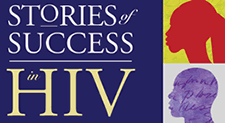HIV/AIDS
Update -- Invirase (Saquinavir) Labels Updated with Important
Risk Information about Abnormal Heart Rhythms
The
Food and Drug Administration is notifying the public that new
risk information has been added to the label of the antiviral
drug Invirase
(saquinavir), describing a potential change in the electrical
activity of the heart when Invirase is used in combination with
Norvir (ritonavir).
Changes in the electrical activity of the heart may lead to
abnormal heart rhythms.
In February 2010, FDA announced it was reviewing clinical trial
data about a potentially
serious effect on the heart from the use of Invirase in combination
with Norvir.
This new risk information has been added to the Warnings
and Precautions, Contraindications, and Clinical Pharmacology
sections of the Invirase label. The FDA is also requiring a
medication guide for patients using Invirase that will describe
the potential risk of abnormal heart rhythms.
The medications Invirase and Norvir are given together to treat
HIV infection. Norvir is given at a low dose with Invirase to
increase the level of Invirase in the body. This process, known
as "boosting," lowers the daily number of Invirase
capsules or tablets that a patient needs to take.
The potential changes to the electrical activity of the heart
associated with Invirase/Norvir, known as prolonged QT or PR
intervals, can be seen on an electrocardiogram (EKG). This new
information was derived from a clinical study designed to study
a drug's impact on the electrical activity of the heart. A prolonged
QT interval can lead to a serious abnormal rhythm called torsades
de pointes, which can be fatal. Torsades de pointes has been
reported in patients taking Invirase with Norvir. A prolonged
PR interval can lead to a serious abnormal rhythm called complete
heart block. Complete heart block has been reported in patients
taking Invirase with Norvir.
Patients with underlying heart conditions or those who have
existing heart rate or rhythm problems are at particular risk.
[See Data Summary, below].
Additional Information for Patients
 |
Do
not stop taking Invirase/Norvir without talking to your
healthcare professional. |
 |
Review
your cardiovascular medical history and current medications
with your healthcare professional. Discuss any concerns
about Invirase/Norvir with your healthcare professional.
|
 |
Tell
your healthcare provider about all the medicines you take,
including prescription and non-prescription medicines, vitamins
and herbal supplements. Invirase and other medicines may
affect each other, causing unwanted side effects. |
 |
Seek
immediate care if you experience an abnormal heart rate
or rhythm or other symptoms including dizziness, lightheadedness,
fainting or heart palpitations. |
 |
Report
any side effects you experience to the FDA
MedWatch program. |
Additional
Information for Health Care Providers
 |
Read
the new changes in the Invirase label carefully if you are
considering or currently prescribing this medication to
your patients. Note that Invirase is contraindicated in
certain patients. |
 |
An
electrocardiogram (EKG) should be performed prior to initiation
of treatment. In addition, consider whether ongoing EKG
monitoring is appropriate for your patient and when it should
be done. Patients with a QT interval > 450 msec should
not receive ritonavir-boosted Invirase. For patients with
a QT interval < 450 msec, an on-treatment ECG is suggested
after approximately 3 to 4 days of therapy. Patients with
a QT interval > 480 msec or with prolongation over pre-treatment
by > 20 msec should discontinue Invirase/Norvir. A cardiology
consult is recommended if drug discontinuation or interruption
is being considered on the basis of EKG assessment to confirm
EKG findings. |
 |
Advise
patients to contact a healthcare professional immediately
if they experience symptoms of an abnormal heart rate or
rhythm while taking Invirase/Norvir. |
 |
Report
adverse events involving Invirase/Norvir to the FDA
MedWatch program. |
Data
Summary
The FDA has evaluated data from a clinical study assessing the
effects of Invirase/Norvir on the QT interval. The study-specific
corrected QTc interval (QTcS) was evaluated in a randomized,
placebo and active (moxifloxacin 400 mg once daily) controlled
crossover study in 59 healthy adults, with electrocardiogram
(EKG) measurements on Day 3. The maximum mean time-matched (95%
upper confidence bound) differences in QTcS interval from placebo
after baseline-correction were 18.9 (22.0) and 30.2 (33.4) msec
for the approved dose of 1000/100 mg twice daily and a supratherapeutic
dose of 1500/100 mg twice daily of Invirase/Norvir, respectively.
There is a delayed effect between QTc interval change and drug
concentrations, with the maximum placebo-adjusted baseline-corrected
QTcS observed at about 12-20 hours post-dose. Although based
on multiple cross-study comparisons, the Day 3 mean Cmax of
Invirase/Norvir 1000/100 mg twice daily in this healthy volunteer
study was estimated to be about 3-fold higher than the mean
steady state Cmax observed with Invirase/Norvir 1000/100 mg
twice daily in HIV-1 infected patients.
In the same study, PR interval prolongation of > 200 msec
was also observed in 40% and 47% of subjects receiving Invirase/Norvir
1000/100 mg twice daily and 1500/100 mg twice daily, respectively,
on Day 3. Three subjects (3%) in the active control moxifloxacin
arm and 5% in the placebo arm experienced PR prolongation of
> 200 msec. The maximum mean PR interval changes relative
to the pre-dose baseline value were 25 msec and 34 msec in the
two ritonavir-boosted Invirase treatment groups, 1000/100 mg
twice daily and 1500/100 mg twice daily, respectively.
In summary, the data show that Invirase/Norvir may affect the
electrical activity of the heart through prolongation of the
PR or QT intervals which may result in abnormal heart rhythms.
Due to this risk, the Warnings and Precautions, Contraindications,
and Clinical Pharmacology sections of the Invirase label
have been updated. Healthcare professionals should read the
new changes to the Invirase label carefully if they are considering
or currently prescribing Invirase to their patients. An EKG
should be performed prior to initiation of treatment. Healthcare
professionals should also consider whether ongoing EKG monitoring
is appropriate for their patients and when it should be done.
The revised Invirase label can be viewed at http://www.accessdata.fda.gov/drugsatfda_docs/
label/2010/020628s033,021785s010lbl.pdf
10/26/10
Sources
R
Klein and K Struble, U.S. Food and Drug Administration. HIV/AIDS
Update -- Invirase (saquinavir) labels updated with important
risk information about abnormal heart rhythms. Advisory. October
22, 2010.
U.S.
Food and Drug Administration. FDA Drug Safety Communication: Invirase
(saquinavir) labels now contain updated risk information on abnormal
heart rhythms. Press
release. October 21, 2010.
Genentech. Changes to the Invirase Prescribing Information. Advisory.
October 22, 2010.
|
|
|
|
 |
|
Stories
of Success in HIV: Proven Interventions for Improving
wareness, Testing, Access to Care, and Treatment of HIV in
Communities of Color.
|
|
|
|
 |
|
Stories
of Success in HIV: Proven
Interventions for Improving wareness, Testing, Access to Care,
and Treatment of HIV in Communities of Color.
|
|
|
